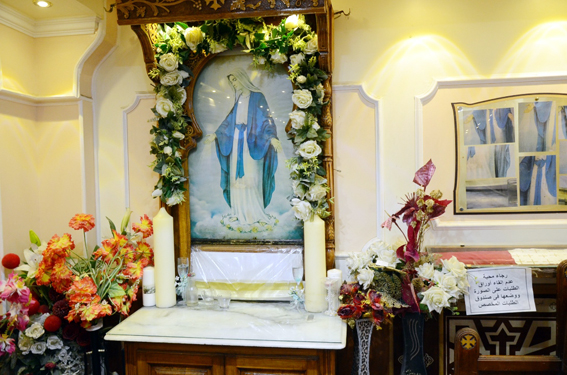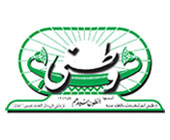Nuria Sanz, Officer in Charge of UNESCO Office in Cairo, together with an accompanying delegation, paid a three-day visit that started on 25 August to the monastery of St Catherine at the foot of Mount Sinai. She was joined by a delegation from the Ministry of Tourism and Antiquities. The visit included St Catherine’s monastery, which is one of the oldest Christian monasteries in the world where monks have resided and worshipped uninterruptedly since the sixth century. It has been a UNESCO World Heritage Site since 2002.
Dr Sanz also toured the ongoing Great Transfiguration Project in the vicinity of the monastery.

Second only to Vatican
Abu-Bakr Abdullah, chargé d’affaires for the Ministry’s Islamic, Coptic and Jewish Antiquities Department, was on hand to receive Dr Sanz. The Ministry’s delegation was led by Khaled Sarwat, Adviser on International Relations and Supervisor-General of the Ministry’s International Cooperation and Treaties Department. They were joined by officials of South Sinai governorate and antiquities experts.
Dr Sanz was taken on a guided tour through the site. She visited the sacred valley which is home to the biblical Burning Bush, Moses’s well, and the church of the Transfiguration. She then toured the monastery’s museum which houses an exceptional collection of rare icons and manuscripts, in addition to altar utensils of the monastery. Dr Sanz was also given a tour through the monastery’s library which is second only to the Vatican Library with regard to the manuscripts, historical texts, and musical and botanical treatises it houses. She was guided by Fr Justin who is in charge of the library. He explained the monks’ efforts to restore the library and digitise the volumes, some of which go back to the eighth century.
The UNESCO delegation were shown the preservation efforts undertaken by the monks and development partners to safeguard the legacy of St Catherine’s. Between 2014 and 2017 the library’s eastern side was developed, its façade upgraded, and the 6th-century Justinian wall fortified and conserved.

Great Transfiguration Project
On the second day of their visit, the UNESCO delegation toured the site of the Great Transfiguration Project (GTP), a project spearheaded by the government and South Sinai governorate in 2020, with the objective of creating a religious, environmental, and therapeutic tourism destination around St Catherine’s. The plan is to develop housing, upgrade roads and tourist services, and put in place facilities to prevent damage from torrential rains or rockslides. A visitor and convention centre is being built. The UNESCO delegation noted that “the landscaping intervention has been extremely careful with the natural and spiritual aspects of the site”.

The delegation met representatives of the Bedouin, local, and Coptic communities in the vicinity of the monastery and the GTP. Among them was Dr Ahmed Mansour, famous as “the wise doctor of Sinai”, whose speciality is treatment with herbs; also Salima al-Gibali who launched the project “Sinai Art”. Dr Sanz toured the GTP project by golf cart, drank traditional Bedouin drinks, and enjoyed Bedouin folk music.
Battling developmental pressures
Abdel-Rehim Rihan, member of the Supreme Council of Culture’s History and Antiquities Committee, drew attention to the efforts done to protect the St Catherine area from developmental pressures such as encroachment by Bedouin settlements, explaining that a 2km buffer zone has been assigned all around the monastery. He also said that special measures are being implemented to avoid over-tourism, prohibit violations against wildlife and the area’s flora, and to monitor polluting vehicles or motorcycles on safari trips.

Dr Rihan explained that the GTP includes plans for conservation of the desert land and biodiversity around St Catherine’s, establishment of a gene bank for rare plant and herb species, and promoting the local Bedouin culture. The project, he said, aims at turning the local cultural and natural heritage into a source of prosperity for the community which would then actively participate in making the project a success.
Lasting preservation
Given that the UNESCO visit aimed to explore potential areas of further collaboration in terms of managing and ensuring a lasting preservation of the site’s heritage and spirit, the visit succeeded in bringing together an extended list of stakeholders, including governmental bodies, religious institutions, Bedouin tribes, and local authorities, and was thus instrumental in fostering dialogue and collaboration to safeguard the site’s unique heritage.

The UNESCO Cairo Regional Office proposed strengthening the project’s green policy, especially in sustainable management of water resources, in the use of new clean energy and energy-saving technologies.
They also proposed the establishment of a permanent training centre, such as a UNESCO category II centre specialising in interpretation, signage, arts and crafts related to natural and cultural heritage, organisation of events and conventions, and generation of local economies involving food products and handicrafts.

Watani International
30 August 2023
















